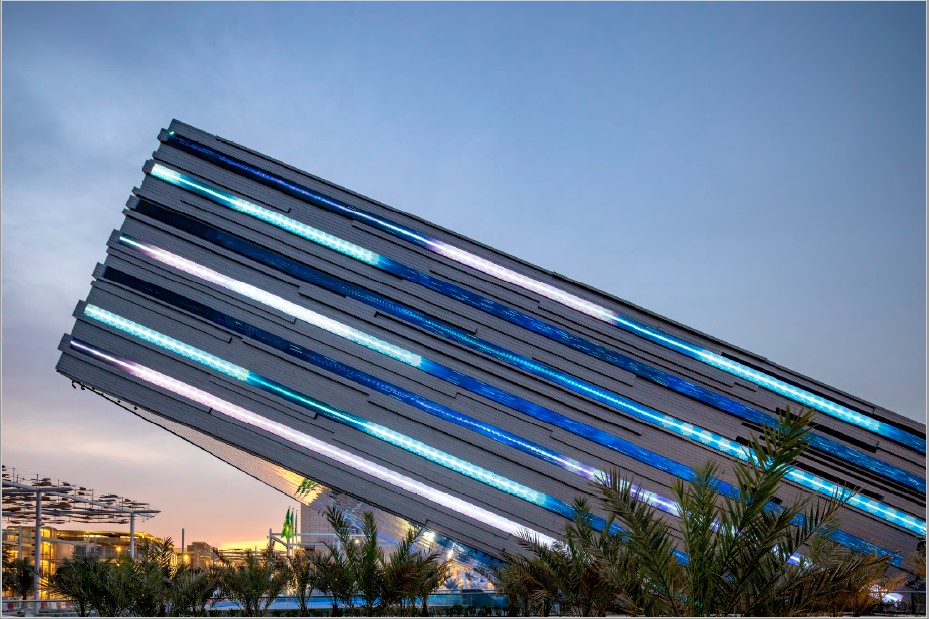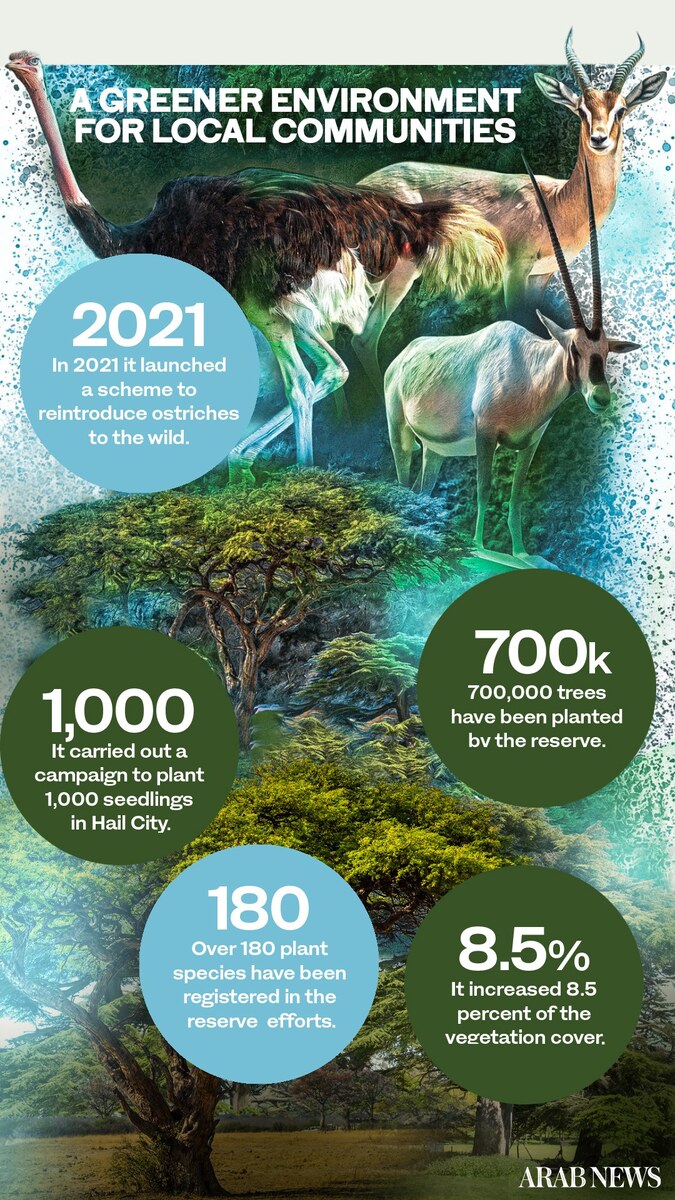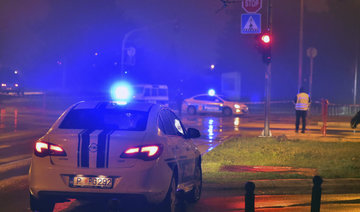DUBAI: Saudi Arabia’s heritage and culture are celebrated in a breathtaking pavilion featured at the Expo 2020 Dubai site that opens to the public on Friday following a star-studded opening ceremony the night before.
The unfolding rectangular façade of the sloping pavilion reaches to sky as if it is ready to take flight.
Rising six stories above the ground and featuring a 1,320 square-meter inclined mirrored screen, the Kingdom’s pavilion, was designed to showcase Saudi Arabia’s ancient culture, heritage; the wonders of its natural landscape - as well as the rapid drive and innovation of its present and future ambitions.
“The pavilion will be our country’s ‘window to the world,’ showcasing Saudi Arabia as it really is,” Hussain Hanbazazah, the Commissioner-General of the Kingdom of Saudi Arabia Pavilion at Expo 2020 Dubai told Arab News.
Designed by UK-based Boris Micka Associates, it spans an impressive 13,069 square meters — the size of two football pitches — and is the second largest pavilion in size only to the UAE Pavilion.
“The structure opens like a large window into the future, with immersive experiences showing the nation’s welcoming character, rich history and heritage, ancient culture,” further explained Hanbazazah.
“It also showcases the towering ambition of the Saudi people and unlimited drive of our nation as well as the myriad opportunities under our national transformation plan, Vision 2030.”
Visitors descend via a staircase, onto an outside terrace area, that includes an award-wining circular water feature.

From there guests can go inside to marvel at startling images of Saudi Arabia’s diverse natural landscape on 68 square-meter screens.
It’s the first stop on a technology-enabled journey through five ecosystems presented on different levels of the pavilion, guiding the visitor through the Kingdom’s natural wonders—its unspoiled coastline, vast deserts, mountainous terrains, and biodiversity.
As guests make their way to the top floor of the building, they are transported up an escalator where around them are built and projected scenes of the flora of Al Bardani Valley Rijal al-Mal and its traditional flower festival in the Asir Region.
In their virtual journey they then pass the Great Tabuk Mountains, known for its towering peaks and expansive valleys and then to the endless sand dunes of the Empty Quarter in southeastern Saudi Arabia and finally into the clear waters of the Red Sea.
“The Saudi Pavilion’s design and architecture is as fascinating and dynamic as the content it displays; it encapsulates the wonders of the Kingdom. Saudi Arabia has developed an outstanding architectural landmark, embodying a bold ambition to shape the world for the better,” Hanbazazah told Arab News.
“The Saudi Pavilion’s design reflects both the country’s past and aspiring future, inviting guests to explore our beautiful natural landscapes while learning about the rich history that has shaped the Saudi Arabia we celebrate today.”
The highest floor reveals additional large floor-to-ceiling screens in addition to one on a long circular-like table.
Playing across both are a series of short films immersing visitors into Saudi Arabia’s 14 cultural landscapes, including UNESCO World Heritage Sites such as At-Turaif District in Ad-Diriyah, Hegra Archaeological Site in AlUla, Historic Jeddah, Rock Art in the Hail Region, and Al-Ahsa Oasis.
It’s a breathtaking and eloquent invitation to visit the Kingdom’s dazzling cultural sites — many of which have only recently been opened to the international community.
Nearby is an audiovisual guide that prompts visitors to explore 23 additional destinations in the Kingdom, including its new world-leading giga-projects showcasing the country’s heritage and strive for sustainable development, Qiddiya, Diriyah Gate, and King Salman Park.
Among its numerous accolades, the Saudi Pavilion at Expo 2020 has been awarded the LEED Platinum Certificate by the US Green Building Council (USGBC), designating it among the most sustainable designs in the world.
It also holds three Guinness World Records for longest interactive state-of-the-art water feature, largest LED mirror screen display, and largest interactive lighting floor

“Through rich and varied content, the Saudi pavilion seeks to offer visitors a unique experience that reflects the true image of the Kingdom as it is today under Saudi Vision 2030, our roadmap for the future, while emphasizing the importance of pride in identity, history, and heritage,” added Hanbazazah.
“The journey through the Saudi Pavilion showcases a future-forward Saudi Arabia: welcoming, young, diverse, and vibrant.”
The Saudi Pavilion goes beyond the sheer structure of a building and takes visitors on a journey to the Kingdom itself.
Once visitors have culminated the heritage and natural tour of the pavilion, they can view “Vision,” an interactive art exhibition revealing a 30-meter sphere that appears to float in the room above a custom-built interactive floor that transforms into various patterns, colors, and light displays.
Lastly, located just outside the main edifice is the ‘Discovery Center’, an explanatory section where guests can view the history and build of the pavilion as well as connect leaders from around the world to forge potential partnerships and discuss investment opportunities, visualized through an interactive digital map of Saudi Arabia.
Hanbazazah added: “Our message to all is, ‘We would be honored to welcome you to the Kingdom of Saudi Arabia Pavilion at Expo 2020 Dubai, the window to the real and authentic Saudi Arabia.’”
Finally, the journey ends with a gift shop and the pavilion’s very own café Sard, where customers are met with a tantalizing display of coffees from across the Kingdom – the aromas filling the air – the ice cream a welcome respite from Dubai’s heat.






































